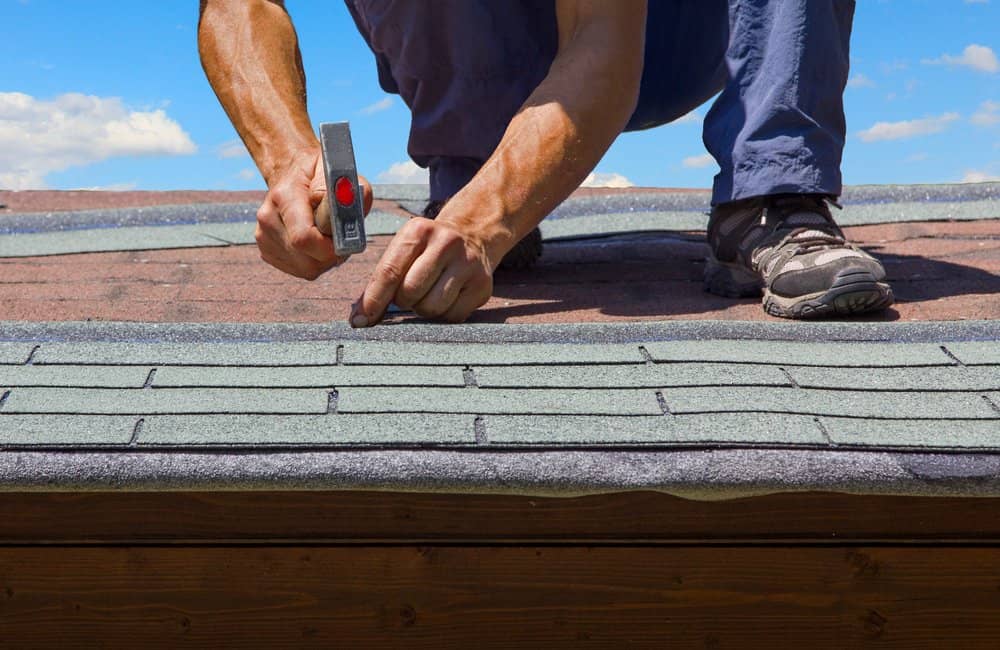AD | Featured
Putting a new roof on your home is a big investment, no doubt. While it might not be the most exciting way to upgrade your home, it can pay off dividends. It’ll help make your home more energy-efficient and add to its curb appeal. If you are considering selling your home anytime in the future, it’s great for resale too.
Yet, putting a new roof on your home is a big investment. You want to choose the best roofing materials available and have a roofer who does quality work to do it.
Shopping for roofing materials is not something most people know much about. Yet, choosing the best materials for your house matters. What are the different types of roofing materials and why choose one over the other?
Read on to learn about the 9 most common roofing materials available and why you might consider each.
Selecting Roofing Materials
There are several things to consider when selecting roofing materials. Things like your climate, durability, type of roof you have, overall aesthetics, and cost will play into your decision.
Check-in with your roofer at Prr247.com to get guidance on which roof will be the best fit for your house and budget.

Asphalt Shingles
Coming in as hands down the most popular roofing choice in North America is asphalt shingles. Experienced roofing professionals can explain how this is the case due to their low cost and ease of installation. This type of three-tabbed shingle is flexible and adaptive to the contour and movement of your roof.
They’re made with fibreglass that is then topped with asphalt and covered with mineral granules. This type of roof is popular because it lasts a long time. Most asphalt shingles come with long term warranties between 20 and 30 years.
If a roof experiences any damage from weather, they are relatively easy to do area replacements and repairs too.
Metal
There are a few different types of metal roof options. The most commonly used type is the standing-seam roof. It has sheets of metal that are bound together by the raised seams that connect them.
This type of roof is very effective and keeps moisture out. They are also pretty widely used in areas that get heavy snowfall because of their durability.
If you live in a part of the country susceptible to wildfires, they are also a good choice. Not all roofing companies install metal roofs. To ensure the best results, consider hiring metal roofers with experience in installation.
They have a long life and when needed can be recycled after they’re replaced. There are some roofers who also work with metal shingles too.
Wood Shingles
Wood shingles look fantastic on a house. They are often made from redwood or cedar and can go on as either shingles or shakes. While they might look good, they are particularly expensive and may not last as long as some other options.
You might see wood shingles on more luxury homes because of their cost.
Wood shingles might not be the best choice if you have a lot of moisture where you live or if you are prone to wildfires as the wood would be more susceptible to burn.

Slate Shingles
If you are a homeowner who wants only the best and can afford to pay for it, then you want slate shingles. The shingles are made from thin sheets of real stone and cut into shingles.
While they might be quite costly, slate shingles make up for the cost in life span. Many slate shingle roofs can last for hundreds of years.
If slate is your goal, you’ll need to find a roofer who specializes in it. Since it’s costly and more uncommon, not as many roofers work with it.
Rubber Slate
If you love the look of slate but maybe not the price tag, you might consider rubber slate. It gives the look of real slate for less money. The rubber slate’s made from engineered polymers that are combined with recycled plastic and rubber.
While it may not last quite as long as natural slate, most rubber slate shingles come with warranties that are longer than their asphalt counterparts.
Clay Tile
Clay tile is another long-lasting albeit expensive option. They are often seen in hot weather climates or where the roof might be exposed to salt in the air as they are very durable. They can have a similar lifespan as slate, lasting up to a century.
Clay’s moulded into the shape of tiles, sometimes interlocking ones. They’re fired and often have the reddish-brown look of clay right from the ground. in some places, they are even fired but not glazed to keep the natural look.

Concrete Tile
Concrete tiles have many of the advantages of clay or slate without the same hefty price tag. It is heavy roofing material making it a great choice where it might withstand high winds or hard storms like in areas that face hurricanes.
The concrete’s poured and shaped into flat or rolled tiles. The nice thing about concrete beyond its durability and better price is that it can also be coloured when the concrete is poured into the tiles.
Depending on the maker, some concrete tiles are finished with a shiny finish to give them a less rustic appearance.
Built-Up
The built-up method of roofing is more common in industrial or commercial buildings. The built-up method is used on flat surface roofs or a roof with very little pitch.
First, several layers of thick felt are laid, sometimes up to four overlapping layers. Then a hot asphalt is poured right onto the felt. Then the roofer pours crushed stone onto the hot asphalt so it sticks in it creating another layer of protection on the roof.
Green
While this method of roofing might make you spin and take another look, it can be highly effective. In nearly every case, you don’t want things growing on your roof.
A green roof must have an extra structure to support the weight. Then plants and grasses are planted and create the roof barrier. While unconventional, green roofs can insulate your house well, absorb rainwater, and put oxygen back out into the world.

Finding the Best Roofing Material for Your House
Since putting a new roof on your house is such a big investment, it makes sense to do your homework. You want to choose the best roofing material that’s right for your climate and local conditions and also one that has a good warranty and lifespan.
Don’t be afraid to talk to your local roofer about options they recommend based on your roofline.
For more articles like this one, be sure to visit our home and garden tab often.
Image Credit: depositphotos.com































No Comments